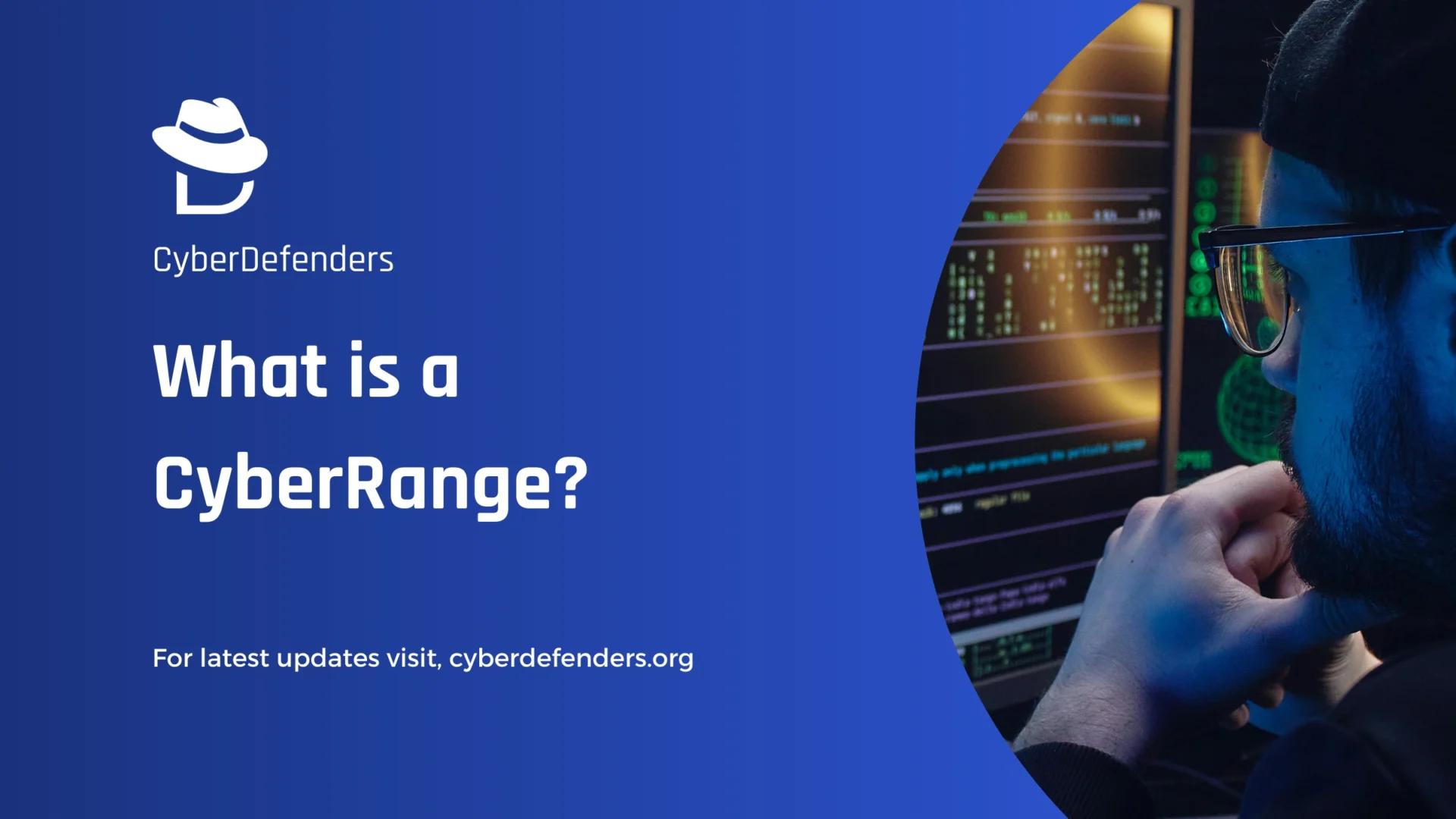What is a Cyber Range?
Glancing into the 2024 Cisco Cybersecurity Readiness Index reveals the need for hands-on cybersecurity training through solutions like cyber ranges.
Firstly, only 3% of organizations qualify for a ‘Mature’ rating in their cybersecurity readiness. Combined with the fact that nearly three-quarters of companies acknowledge a high likelihood of significant disruptions due to cyber incidents within the next two years, it highlights a massive gap between potential threats and prepared defenses.
Cyber Ranges allow organizations to replicate real-world scenarios to provide an immersive learning experience, enabling cybersecurity professionals to hone their abilities to detect, respond to, and mitigate threats in a controlled setting.
Keep reading to learn about Cyber Ranges, who needs them, their benefits and types, what to look for when choosing, and recommendations to start your research with.
Read also: Top SOC Analyst interview questions and answers in 2024
Cyber Range Definition
A Cyber Range is a specialized virtual environment that replicates real-world IT infrastructure for training, testing, and developing cybersecurity skills. It is an essential tool for cybersecurity professionals to engage in realistic cyber threat emulation and response exercises without risking actual systems or data.
Why use cyber ranges?
- Interactive Simulate Environments: Cyber Ranges provide dynamic, scenario-based training environments where users can interact with simulated network systems, applications, and tools.
- Realistic Threat Replication: These environments are designed to mirror the types of cyber threats organizations face today, including everything from basic phishing attacks to sophisticated state-sponsored cyber operations.
- Performance-Based Learning and Assessment: Cyber Ranges assess users’ performance in real-time, offering immediate feedback on their actions.
These features combine to create a potent training tool that enhances the readiness and response capabilities of cybersecurity teams, preparing them to effectively tackle emerging threats and protect their organizations.
Read also: DFIR Training: Full Guide To Learn Digital Forensics And Incident Response
Who Uses a Cyber Range?
Many sectors utilize Cyber Ranges, each leveraging the technology to enhance their cybersecurity posture and response capabilities in a way that matches their threat model and training needs.
Government and military: use cyber ranges to train and evaluate their cyber defense units. These high-stakes environments require sophisticated training tools to simulate state-sponsored cyber threats, espionage, and cyber warfare tactics.
Using Cyber Ranges, these organizations can conduct large-scale exercises that mimic an entire nation’s infrastructure under attack, allowing them to develop strategic responses and improve interagency coordination during real cyber threats.
Read also: Blue Team vs. Red Team in Cybersecurity: Roles & Skills
Universities and technical colleges: incorporate Cyber Ranges into their cybersecurity education programs. This provides students with a secure environment to put their theoretical knowledge into practice and build confidence in their skills before entering the job market.
Gaining practical experience is particularly crucial, considering the findings from the 2023 State of Cybersecurity report by ISACA. The report highlights that hiring managers have low confidence in determining whether a candidate is qualified, with hands-on experience being the key determinant (72%) of a candidate’s qualifications, even more so than certifications held by the candidate (37%).
Private sector companies: utilize cyber ranges to simulate attacks on their networks, identify vulnerabilities, and assess the effectiveness of their response strategies, particularly in industries like finance and healthcare, where data breaches can have catastrophic consequences.
Exploring The Types of Cyber Ranges
Cyber ranges come in several types, each tailored to specific training needs and organizational requirements. Understanding the distinctions between these types can help organizations choose the most appropriate setup for their unique security objectives.
Simulation Ranges are the most common type, providing a virtual environment where cybersecurity scenarios are modeled to simulate real-world network conditions, device logs, and forensic artifacts. This type is ideal for organizations looking to conduct large-scale security exercises without the cost of physical infrastructure, focusing on breadth rather than depth in cybersecurity training.
Emulation Ranges offer a more detailed approach by replicating specific hardware and network configurations, which allows for testing against a mirror of an organization’s actual network. This type is particularly valuable for organizations that require precise, realistic testing environments to fine-tune their security tactics and strategies.
Hybrid Ranges combine elements of both simulation and emulation. They provide flexibility, allowing users to switch between generalized training scenarios and targeted, high-fidelity simulations that reflect their own systems and threat scenarios.
Read also: SOC Analyst Training and Certifications
How to Choose a Cyber Range?
Choosing the suitable Cyber Range for an organization involves assessing your organization’s training needs and comparing the available solutions. Here are some key factors to consider to help you narrow down the selection process:
1. Alignment with Training Objectives: Determine whether the cyber range offers the types of scenarios and training modules that align with your organization’s specific cybersecurity objectives.
For instance, if the focus is on incident response, the range should support complex, multi-layered attack simulations.
2. Realism: Evaluate the level of realism the cyber range provides. Higher fidelity is crucial for organizations that need detailed and highly accurate simulation environments to test specific security protocols or hardware configurations. Lower realism may be sufficient for basic training and awareness programs.
3. Scalability: Consider whether the cyber range can scale according to your organization’s growth and the evolving complexity of cyber threats.
4. Keeping up with cyber threats: A high-quality cyber range should keep up with the latest threats and integrate new technologies and attack vectors as they emerge.
5. Central Management and Performance Monitoring: Check if the cyber range provides a centralized management interface. This feature is essential for tracking performance metrics and ensuring the training objectives are effectively met.
Recommended Cyber Ranges
So, you have successfully assessed your team’s training needs and reviewed the selection criteria. Now, you need to choose a suitable provider.
It’s essential to consider platforms that are widely recognized for their effectiveness. Below are some of the ones we recommend and encourage you to check and determine if they align closely with your needs:
The Virginia Cyber Range: offers extensive training modules suitable for educational institutions and government agencies. It combines various cyber range capabilities to provide a comprehensive educational environment supporting teaching and hands-on practice in cybersecurity skills.
The National Cyber Range (NCR): Developed for advanced cybersecurity testing, the NCR provides a controlled, secure environment for testing complex cyber technologies and systems under realistic conditions. This range is particularly suited for government and military organizations that require rigorous testing environments.
CyberDefenders Blue Team Labs: offer realistic, up-to-date scenario labs that align with enterprise operational needs. The platform provides instant access through a web browser interface, requiring no setup and offering flexible access. You can monitor training progress through the Team Leader Dashboard, enabling central management of teams and effective monitoring of training outcomes.
Future insights
As the landscape of cybersecurity threats continues to evolve, so will the technology behind cyber ranges. We will likely see increased use of artificial intelligence (AI) to dynamically simulate sophisticated cyber threats and offer real-time feedback. This will allow for more personalized learning experiences and enable Cyber Ranges to adapt instantly to the user’s skill level and learning progress.
These future trends indicate the necessity for cutting-edge, flexible, and accessible cybersecurity training tools. Enterprises looking to enhance their cybersecurity defenses should consider platforms like CyberDefenders, which offer comprehensive and up-to-date training solutions.
With a platform that evolves in tandem with the cyber threat landscape, CyberDefenders ensures that your workforce is always prepared to face the latest cybersecurity challenges.
References:
- National Institute of Standards and Technology (NIST): https://www.nist.gov/document/cyber-range
- Cisco – Cybersecurity Readiness Index: https://newsroom.cisco.com/c/r/newsroom/en/us/a/y2024/m03/cybersecurity-readiness-index-2024.html
- European Cyber Security Organization: https://ecs-org.eu/ecso-uploads/2023/05/2020_SWG-5.1_paper_UnderstandingCyberRanges_final_v1.0-update.pdf
- ISACA – State of Cybersecurity: https://www.isaca.org/resources/reports/state-of-cybersecurity-2023






